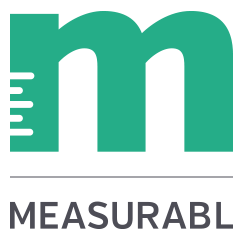Improve: Step 3 of 3 in Sustainability Best Practice

GETTING BETTER ALL THE TIME
Step 1 gave us the systems and processes needed to facilitate data collection and generate a sustainability report. Step 2 ensured we benchmarked our performance against that of our peers in order to understand both our absolute and relative performance. This brings us to Step 3 in the continuous process of reporting best practice: implementing and maintaining initiatives needed to improve performance. It’s the moment we’ve all been waiting for – the chance to generate ROI from an effort that, to this point, can feel like an exercise in self-admiration (or self-flagellation, depending on your viewpoint). It’s also the moment at which organizations tend to eject from the process of continuous improvement and fall into the trap of implementing what Dr. Robert Pojasek likes to call “random acts of sustainability”: one-time quick fixes to their sustainability deficiencies.
Beware – as it is with most easy fixes, you may find yourself returning to the well year after year looking for something else to help you gain an edge. This is not only expensive, it leaves your organization casting about for ad hoc solutions year after year, and justifying those expenditures every single time. Organizations enthralled to random acts of sustainability live in an annual purgatory of rationalization, budgeting, approvals, and shifting baselines to get any sustainability initiative off the ground. As you might imagine, this is not a “sustainable” approach.
DEFINING SUSTAINABILITY
How to avoid random acts of sustainability? First, pause long enough to revisit your organization’s Mission, Vision and Core Values (MVCs). It may sound wonky, but every organization has them. Drag them out, pull them off the wall, grab them wherever they may sit, forlorn and neglected, and consider what they say. Is sustainability in there? I’ll bet you it is. Does your organization aspire to be around in 50 years? 100? Does it respect the rights of its workers, abide by the rule of law wherever it operates, value its stakeholders or desire to have a positive impact on its community? It probably doesn’t encourage frivolous waste and neglectful use of resources. So you’ll see sustainability either implied or explicitly stated in your MVCs (Coca-Cola provides a good example).
Now, think about all the ways your organization works, every day, to accomplish its goals as inspired by its MVCs. There is a sense of purpose. People have their roles and responsibilities. For example, the CEO shows up each day with an agenda, the Facilities Manager with a set of mechanical systems to inspect and the HR Administrator with a set of workplace criteria to enforce. Each person, as part of their job description and daily function, works towards the organization’s MVCs. So if sustainability is part of your MVCs, why is it something that gets bundled into an annual report, scraped together in a last minute initiative, or budgeted for ad hoc? That’s not the way any other aspects of an organization functions. Why is sustainability somehow different?

